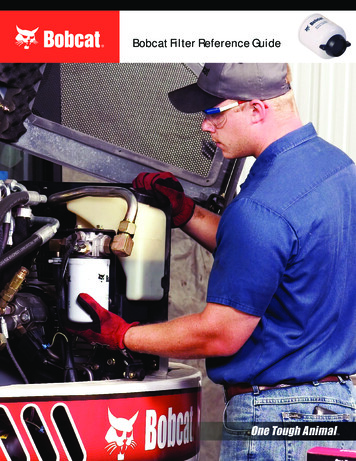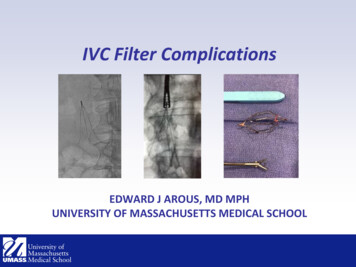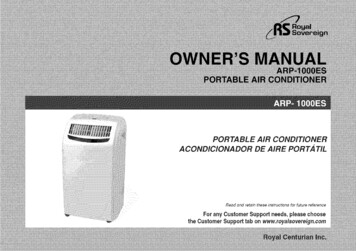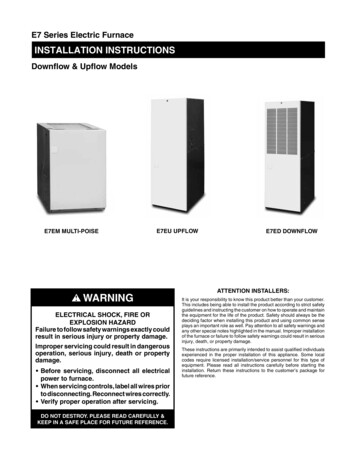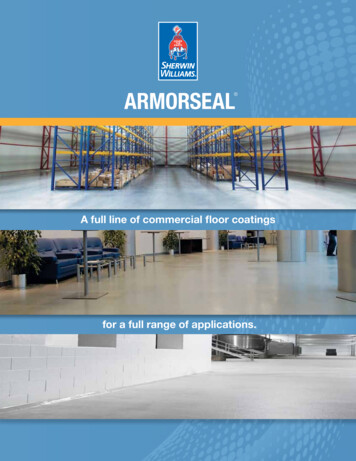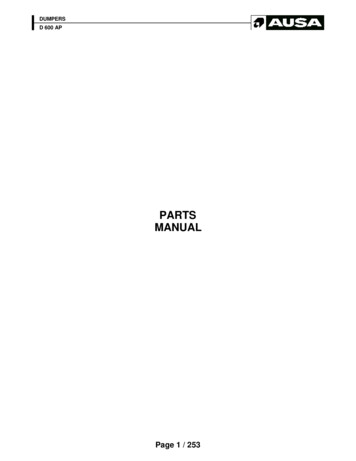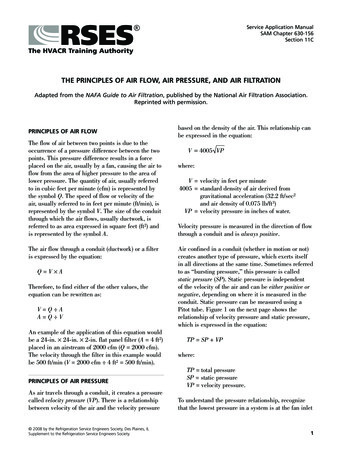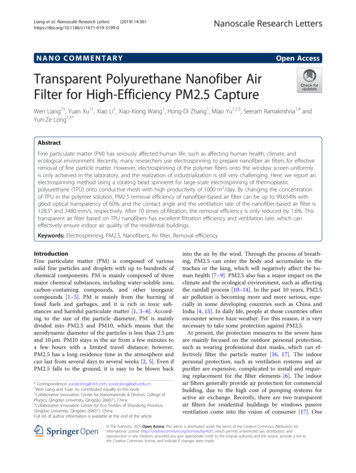
Transcription
Liang et al. Nanoscale Research Letters(2019) O COMMENTARYOpen AccessTransparent Polyurethane Nanofiber AirFilter for High-Efficiency PM2.5 CaptureWen Liang1†, Yuan Xu1†, Xiao Li1, Xiao-Xiong Wang1, Hong-Di Zhang1, Miao Yu1,2,3, Seeram Ramakrishna1,4 andYun-Ze Long1,5*AbstractFine particulate matter (PM) has seriously affected human life, such as affecting human health, climate, andecological environment. Recently, many researchers use electrospinning to prepare nanofiber air filters for effectiveremoval of fine particle matter. However, electrospinning of the polymer fibers onto the window screen uniformlyis only achieved in the laboratory, and the realization of industrialization is still very challenging. Here, we report anelectrospinning method using a rotating bead spinneret for large-scale electrospinning of thermoplasticpolyurethane (TPU) onto conductive mesh with high productivity of 1000 m2/day. By changing the concentrationof TPU in the polymer solution, PM2.5 removal efficiency of nanofiber-based air filter can be up to 99.654% withgood optical transparency of 60%, and the contact angle and the ventilation rate of the nanofiber-based air filter is128.5 and 3480 mm/s, respectively. After 10 times of filtration, the removal efficiency is only reduced by 1.6%. Thistransparent air filter based on TPU nanofibers has excellent filtration efficiency and ventilation rate, which caneffectively ensure indoor air quality of the residential buildings.Keywords: Electrospinning, PM2.5, Nanofibers, Air filter, Removal efficiencyIntroductionFine particulate matter (PM) is composed of varioussolid fine particles and droplets with up to hundreds ofchemical components. PM is mainly composed of threemajor chemical substances, including water-soluble ions,carbon-containing compounds, and other inorganiccompounds [1–5]. PM is mainly from the burning offossil fuels and garbages, and it is rich in toxic substances and harmful particulate matter [1, 3–6]. According to the size of the particle diameter, PM is mainlydivided into PM2.5 and PM10, which means that theaerodynamic diameter of the particles is less than 2.5 μmand 10 μm. PM10 stays in the air from a few minutes toa few hours with a limited travel distance; however,PM2.5 has a long residence time in the atmosphere andcan last from several days to several weeks [2, 5]. Even ifPM2.5 falls to the ground, it is easy to be blown back* Correspondence: yunze.long@163.com; yunze.long@qdu.edu.cn†Wen Liang and Yuan Xu contributed equally to this work.1Collaborative Innovation Center for Nanomaterials & Devices, College ofPhysics, Qingdao University, Qingdao 266071, China5Collaborative Innovation Center for Eco-Textiles of Shandong Province,Qingdao University, Qingdao 266071, ChinaFull list of author information is available at the end of the articleinto the air by the wind. Through the process of breathing, PM2.5 can enter the body and accumulate in thetrachea or the lung, which will negatively affect the human health [7–9]. PM2.5 also has a major impact on theclimate and the ecological environment, such as affectingthe rainfall process [10–14]. In the past 10 years, PM2.5air pollution is becoming more and more serious, especially in some developing countries such as China andIndia [4, 15]. In daily life, people at those countries oftenencounter severe haze weather. For this reason, it is verynecessary to take some protection against PM2.5.At present, the protection measures to the severe hazeare mainly focused on the outdoor personal protection,such as wearing professional dust masks, which can effectively filter the particle matter [16, 17]. The indoorpersonal protection, such as ventilation systems and airpurifier are expensive, complicated to install and requiring replacement for the filter elements [6]. The indoorair filters generally provide air protection for commercialbuilding, due to the high cost of pumping systems foractive air exchange. Recen
Some laboratories have prepared a variety of window screens to protect the quality of indoor air with nanofi-ber. For instance, Chen et al. [18] reported an air filter prepared using electrospun TPU polymer; TPU nanofi-ber air filter is very effective for removing PM2.5 (98.92%) with very low-pressure drop (10Pa). Khalid
